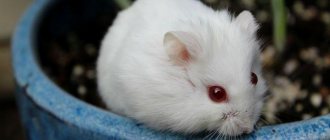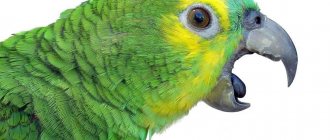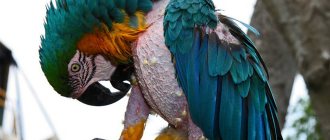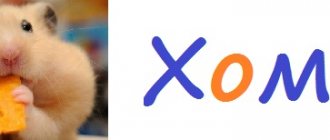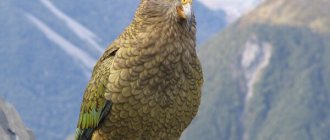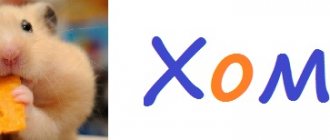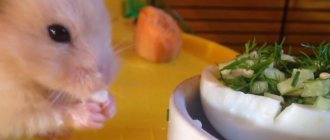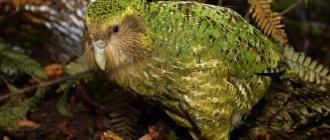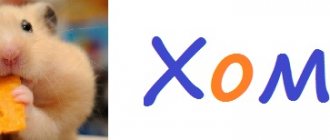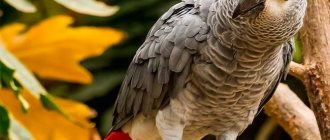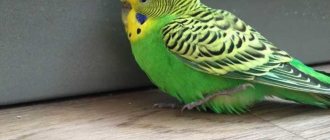Today, the Corella parrot ranks after the budgerigar on the list of recognizable exotic birds. Nymph parrots, as they are also called, can change until the first year, only after this stage you will see how the appearance of the pets changes. And according to reviews from the owners: it is impossible to know everything about cockatiels! After all, they are funny, funny and dancing favorites, with whom it is never boring to sing!
About Corella parrots
This is what the Corella parrot looks like photo
The Corella parrot resembles a cockatoo in appearance, whose head is decorated with a beautiful crest. In the wild, their feathers are gray. This is what a cockatiel parrot looks like, you can see the photo above.
origin of name
— Advertising —
Photo of cockatiel
The homeland of cockatiels is Australia. This is how these feathered pets were dubbed by the indigenous inhabitants of the continent. Translated, this name means “like an eagle,” and most ornithologists are inclined to believe that cockatiels were the ancestors of eagles and hawks.
Interestingly, another name for the bird came from Europe. When travelers first saw these graceful birds, they mistook them for gray nymphs, who were considered by the Greeks to be eternally young goddesses of the life-giving forces of nature. Since then, scientists have called the cockatiel a nymph (Nymphicus hollandicus).
The first description of these Australian parrots was given by the Scottish naturalist Robert Kerr in 1793. And in 1840, the first individuals left the mainland on the ships of seafarers and conquered Europe with their appearance and charm. Since 1848, offspring began to be obtained from adult birds in captivity.
Appearance
— Advertising —
Appearance of cockatiel photo
The body of a medium-sized cockatiel parrot, including the tail, is 30 cm. At the same time, the pointed tail is half the length of the bird, and the weight rarely exceeds 100-120 g. You can see a photo of the cockatiel parrot above. The wingspan is from 30 to 35 cm. There are bright spots in the parotid area, and the beak has a neat shape and is slightly curved down, with visible plumage under the nasal openings. With good home maintenance and proper diet, the beak remains smooth, hard and shiny, without signs of delamination and wax growth.
At a young age, birds do not differ in plumage color. But then the males acquire a more saturated olive-gray color. The small head is crowned with a yellow crest. The color of the female's plumage, legs and rings surrounding the eyes remain gray, but the crest and head have a yellowish tint, and the top of the tail and the lower part of the back may be covered with brown pigment. The eyes of cockatiels always remain dark brown, and there are round orange spots on the cheeks that distinguish this bird from other cockatoos.
Corella is a songbird with a rather melodious voice. They sing well and also easily parody human speech, the sounds of household appliances and pets.
The variety of colors is due to the artificial breeding of cockatiels, since it is currently prohibited to export these birds from Australia. Breeders have bred more than 20 species of cockatiels of a wide variety of colors. In addition to colorful parrots, you can also find black and white nymphs.
Lifestyle
Wild representatives are always part of the pack. They are very energetic and rarely stay in one place for long. Nymphs walk quickly on the ground, spend long flights, and climb tree trunks well.
Read also
Can budgies have fleas
Birds prefer to rest on the upper parts of old eucalyptus trees. This is due to the fact that, thanks to their gray color, they can easily camouflage themselves in dried branches. But Corellas are very trusting and, when they notice people, they allow them to approach them. Thus, they often become prey for hunters.
Domesticated Nymphs do not require special conditions of detention.
Cockatiel lifestyle
The standard set for all parrots is enough for them:
- wide cage with the necessary equipment;
- suitable microclimate;
- the ability to fly around the room;
- constant communication;
- timely treatment;
- balanced diet for Corella;
- pure water;
- regular cage cleaning;
- safety;
- the opportunity to interact with other birds.
Behavior and diet
The photo shows a gray and white cockatiel.
Corellas love to watch people's actions and are easily involved in games; they are very active and curious. However, to maintain such energy, birds need the right diet.
In the wild, parrots prefer the leaves of eucalyptus trees and shrubs, juicy fruits and herbs. They also love nectar, seeds, resin and young bark of many woody plants.
At home, they should receive a similar diet. It should include fresh vegetables, fruits, herbs and grains. Occasionally it is necessary to add a boiled egg and low-fat natural cottage cheese to the food.
Habitats
Photos of gray cockatiels
Nymphs are indigenous to Australia. Their main habitat is eucalyptus groves in river floodplains, as well as fertile steppes, in which there are enough solitary trees and tall shrubs. Small groups of cockatiels live in semi-deserts.
During the breeding season, cockatiels break into pairs, hatch chicks and take care of their offspring. The rest of the time they unite in flocks of 10-15 individuals. If the year is excessively dry, parrots move in large numbers closer to bodies of water.
On other continents, cockatiels are not found in the wild, although they are very popular to be kept instead of budgies in North America, Asia, Europe and in our country. Domestic parrots that fly away from their owners are not able to survive in the wild on their own. Therefore, you need to ensure that feathered pets do not have the opportunity to fly out of windows or doors into the street.
History of discovery
Cockatiels are native to Australia. In 1838-1840 the famous ornithologist and animalist John Gould visited this country with a zoological expedition and took from there about 800 birds, among which was the Nymph. The scientist wrote and published the book “Birds of Australia”, where he gave a complete description of their appearance and way of life.
In the forties, cockatiels spread throughout Europe. The fact that they are now present in our lives is the merit of the breeders. In the sixties of the last century, the Australian leadership banned the export of parrots outside the state. After this, selection and breeding of Corellas proceeded without the participation of wild winged birds.
Migratory or wintering
The photo shows a yellow cockatiel on a branch.
Corellas are capable of covering considerable distances, but they are not migratory birds. In winter in Australia, the thermometer does not drop below 0°C, so birds can easily cope with this time of year. In addition, winter is considered the rainy season, when plants receive sufficient moisture and increase their growth, providing food for birds.
Cockatiels were forced into Europe on ships, but not a single bird left Australia on its own.
Health
In general, this breed is not prone to diseases and is long-lived. Any diseases that occur in cockatiels are the result of neglect of the pet. Be attentive to the behavior of the bird, because it will not be able to tell you that it is not feeling well.
What health problems may exist:
- Feather loss.
- Feather and skin parasites.
- Violation of the structure of bones and beak.
- Infectious diseases.
- Disturbances in the gastrointestinal tract.
- Obesity.
- Amyotrophy.
- Avitaminosis.
Sound the alarm immediately and run to the clinic if the bird is already clearly sick. Most diseases are caused by poor or inappropriate nutrition and stress. Signs of health problems can be seen in behavior. The cockatiel becomes more aggressive, more active, or, on the contrary, very lethargic and constantly sleepy.
The pet may refuse any food or liquid. Check for breathing problems and any discharge from the nose, eyes or cloaca. Never treat a cockatiel yourself! Entrust examination and treatment only to a specialist!
Species (subspecies)
Photo of a light gray cockatiel
The only species of cockatiel that lives in natural conditions has a light gray or dirty gray color. But thanks to breeders, new varieties of nymphs of different colors were bred in captivity. Currently, there are eleven main color variations of cockatiels, and some even have their own subspecies.
Albino Corella
Photo of an albino cockatiel.
A distinctive feature of this species is the white color of the plumage of the female and male and red eyes. A slight creamy coating is allowed, but the yellow color of the head feathers and crest is retained.
Males always have snow-white feathers, but females may have slightly yellowish spots on the wings and under the tail, which create a marbled effect.
To produce albinos, breeders crossed lutino with parrots that have a white head.
The albino cockatiel subspecies includes the white nymph, which has black eyes and a clearly visible yellow coating on its plumage. Interestingly, the two longest tail feathers in males are snow-white in color, while the rest remain slightly yellowish. In females, the tail is yellow and the undertail is marbled. When obtaining this subspecies, they were used to cross white females and gray males, who are carriers of the whiteness gene.
Lyutino
Photo of Corella Lutino
Corella Lutino is characterized by red eyes and deep yellow feathers. In adults, the eye color changes to dark cherry. There is spotting on the wings and back, but the color contains only various shades of yellow, which determines the name of the species.
On the light yellow plumage of the dewlap there is a kind of ladder of more clearly visible spots. This is considered a disadvantage of the breed, so breeders are looking for crossbreeding variations that will make it possible to get rid of it.
In male lutinos, the “blush” on the cheeks must be orange.
Sheki
Photo of Sheki cockatiel
Sheki are the most popular and expensive varieties of cockatiels. They are distinguished from other species by the presence of white spots on gray feathers. The symmetrical arrangement of spots, as well as the presence of gray and white in equal proportions, are especially appreciated.
Sheki have gained great popularity among breeders, as they are recognized as the best source material for breeding new subspecies. An example of this breeding is the Pearl Neck, which has an all-white head, a yellowish-tinged tail, and iridescent gray feathers on the back and wings. Interestingly, in adult females the color remains even after molting, while in adult males the color changes to the classic shek.
Among this subspecies of nymphs there are “harlequins” with gray wings, a yellow head and crest feathers. The rest of the body, neck and legs are white.
Cinnamon colored cockatiel
Photo of a cockatiel with a brown tint.
In the body of parrots, under the influence of enzymes, a black pigment is formed. Due to the failure of biochemical processes, the cinnamon-colored nymph produces more of these enzymes than the gray-colored cockatiel. As a result of crossing them with lutino, individuals with varying degrees of intensity of brown color are obtained.
From birth to 3 months, the eye color of the chicks remains red and then darkens. In adult birds, the beak and pink feet also gradually become darker.
In addition to the varieties described, the following subspecies of nymphs are distinguished:
- black;
Photo of black cockatiel
- light and pearl gray;
Photo of a light gray cockatiel
- dark yellow;
Photo of dark yellow cockatiels
- white- and black-winged.
Photo of a white-winged cockatiel
Owner reviews
We chose between a budgie and a cockatiel. We did not regret the choice we made. The parrot easily makes contact with children. They entertain each other and don't bother me
Elena, Ekaterinburg
Picky and friendly birds. The cage left from the budgerigar is too small. I had to buy a new bigger one. The parrot is clean and not picky about food. I'm happy with the purchase.
Victor, Shakhty
Everything would be fine, and the children are happy, but she screams simply in horror. It will wake you up in the morning, won’t let you read in silence during the day, and by the evening it won’t calm down. I'd rather buy a canary
Anna, Moscow
A beautiful, vocal and smart bird. Freezes as soon as the temperature drops below +20°C. In our conditions, additional lamps were required as a heat source. In general, it’s ok, the children are happy
Alena, Nizhnevartovsk
There's a lot of garbage from it. I laid down sawdust, and within a day almost all of it ended up on the adjacent cabinets. Well, at least they didn’t recommend sand. He even throws out toys and chews out a wooden cage.
Marina, Kislovodsk
My wife developed an allergy to down and feathers, and not immediately, but only after a month. I had to give it to friends. And the bird itself is interesting, smarter than a budgie
Alexander, Kolomna
Female and male
The photo shows a female and a male cockatiel.
Sexual dimorphism in cockatiels is weakly expressed. The male Corella is colored in richer shades and has distinctive white stripes on its wings. The plainness of the female’s coloring can only be noticed in comparison with an individual of the opposite sex. She also has transverse pale yellow stripes on her tail, and oval spots of the same color can be found on the inner surface of her wings. Young individuals retain the same color as their mother until the completion of the juvenile molt. However, after molting at 9-12 months, it changes in males.
In cockatiel chicks, sex can only be determined by behavioral reactions. Adolescent males sing loudly, bang their beaks on hard surfaces, straighten their shoulders and stomp, trying to attract the attention of females. Those, in turn, behave modestly, take a low posture and throw back their heads, showing their readiness to submit to the male.
Nesting
For nesting, cockatiels choose the rainiest months, when the chances of quickly finding food for them and their offspring increase. Birds prefer to nest in tree hollows or other openings, for example, in the voids of large dried branches.
Typically, a female cockatiel lays about three to seven eggs, each about two centimeters long. Moreover, both the male and the female hatch the eggs. This takes about three weeks. Parents take turns feeding the hatched chicks. When the babies are a month and a half old, they begin to leave the nest.
Around this time, the female lays her second clutch. However, parents continue to feed the first offspring until the chicks learn to obtain food on their own.
Keeping at home and breeding
Photo of a yellowish cockatiel sitting on a glass
Despite the fact that a hot climate prevails in the homeland of cockatiels, it is best to maintain the room temperature from 18 to 25°C. Even a temporary decrease in indicators to +10°C will not have detrimental consequences for the health of the bird. However, exposure to frost or draft will quickly lead to illness or death of the nymph.
The average daylight hours should be 14 hours in the warm season, and 10 hours in the cold season. It is also useful for cockatiels to turn on a UV lamp.
Information about cockatiel parrots when kept at home
and a Gray-yellow cockatiel sits on a branch photo
In order for your feathered pet to quickly get used to its new place of residence, you must choose and equip its cage correctly. For one bird, the dimensions should not be less than 50x40x60 cm. For a pair of nymphs, larger cages are needed, measuring 150x60x90 cm.
It is advisable to release parrots daily so that they have the opportunity to fly freely and walk around the house for 1.5-2 hours. If this is not possible, you should purchase a cage in which the birds can fly from place to place.
The bars of the cage should not be painted, since paint can cause poisoning if it enters the bird’s stomach. Inside, the nymphs' home should be equipped with several perches, feeders and drinkers attached to the walls. It is advisable to hang “bird” toys, a mirror and a bell. At the bottom you should put branches of woody plants treated with boiling water and place a bowl with sand.
Corellas love to swim, so you need to put a bathing suit with water in the cage. Clean up as it gets dirty, promptly discarding droppings, fallen feathers and leftover food.
How to feed your pet cockatiel
In the photo, a female and a male cockatiel are feeding on a mineral stick.
To provide the cockatiel’s body with a sufficient amount of energy and maintain health, you should give them succulent and grain-based foods, and also periodically introduce vitamin and mineral complexes into the diet.
Grain mixtures must contain the following components:
- millet;
- oats;
- corn;
- wheat;
- sunflower seeds;
- flax seeds and weeds.
It is best to purchase balanced special food intended for parrots in specialized stores.
Corellas love juicy fruits and berries. Citrus fruits and unroasted nuts can be given occasionally. Among vegetables, nymphs prefer zucchini, carrots, and pumpkin, and among greens, lettuce, spinach, young shoots of dandelion and beets.
For protein foods, you should choose low-fat cottage cheese and hard-boiled eggs. In the autumn-winter period, nymphs should be given branches of pine needles and rowan 2 times a week.
Breeding information
Photo of a gray-yellow cockatiel
Corellas can easily reproduce at home if they are provided with proper care and nutrition. The optimal breeding period is from May to October. Only healthy birds with no visible signs of disease should be brought together. A special house must be placed in the cage, where the females build nests and lay eggs.
Parents alternately warm the clutch of eggs, from which chicks emerge after 20-23 days.
In the first days of life, females feed the chicks with “fore stomach milk”, which is a yellowish liquid. On the 3-4th day, they begin to feed the cubs solid food, which they first swallow, partially digest, and then regurgitate. After 2 weeks, babies can absorb small pieces of food on their own. And by the beginning of the second month of life, they leave the nest and try to fly.
During the breeding period, difficulties with the health of the female and babies may arise, so as an alternative, you can buy a chick from an experienced breeder.
Reproduction
In nature, the nesting cycles of the cockatiel depend on the rainy season. This is due to the fact that it is easier to raise chicks when there is an abundance of water. All species of cockatiels breed twice a year: the first clutch is usually incubated in the fall, the second in mid-winter. The female lays five to seven eggs, which are incubated alternately with the male for 21 to 23 days. The parents feed the hatched chicks until they are approximately two months old, then the older generation leaves the nest. Having rested, the couple begins a new laying.
Corella parrot chick
A married pair of tame parrots can reproduce freely if favorable conditions are created:
- closer to autumn (or spring, if this time of year is chosen), you should start feeding the birds with a special vitamin mixture;
- add sprouted grains and calcium to food;
- gradually increase daylight hours to 16 hours;
- You need to prepare a nest box (house) in the cage.
Individuals must be at least two years old and not older than six years old. Inbreeding is undesirable, otherwise you may end up with defective, sick chicks with defects.
Interesting Facts
Photo of a cockatiel on a cage
There are several interesting facts that colorfully characterize cockatiels:
- The nymph's intelligence is identical to the mental development of a 3-4 year old child.
- A parrot raised in captivity becomes completely tame, considering a person a member of its family.
- In the wild, a cockatiel sitting on the ground will not allow a person to approach it, but when it is on the branches of trees, it can safely allow people to touch it.
- Nymphs recognize about one and a half hundred different images per second, while humans recognize only 16.
- There are schools in Australia that teach cockatiels and other parrots to talk.
- Nymphs do not have vocal cords, and they produce sounds only with their mouths.
- Depending on which paw the cockatiel takes food with, it can be considered right-handed or left-handed.
Name
It is generally accepted that the Corella parrot got its name thanks to Czech breeders who saw the striking similarity of this bird to two species of cockatoo parrots:
- Cacatua tenuirostris - nosed cockatoo,
- Cacatua sanguinea - naked-eyed cockatoo.
The local, Australian name appeared as a result of combining these two names.
European scientists of the eighteenth century gave these birds another name - nymphs, from the Latin name Nymphicus. According to ancient Greek myths, nymphs are eternally young personifications of the living elemental forces of nature.
Singing
Both in natural and at home conditions, the cockatiel sings very melodiously, accurately repeating the sounds it hears. Nymphs easily copy the sounds of alarm clocks, household appliances and other pets. But teaching them to talk is a little more difficult. To do this, you need to show self-control and patience.
Male cockatiels sing especially beautifully during the mating season. At this point, it is easiest to teach the cockatiel to repeat sounds, as well as melodies. To do this, you should hum or whistle simple songs several times a day.
